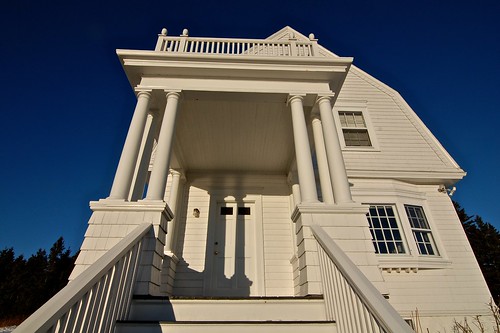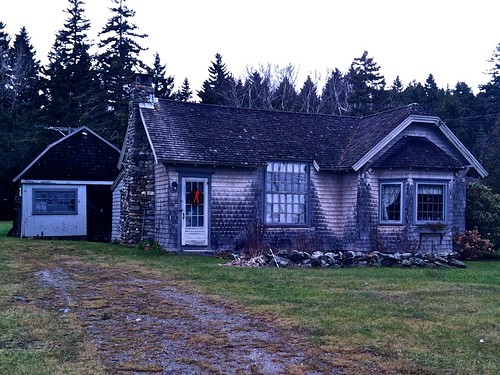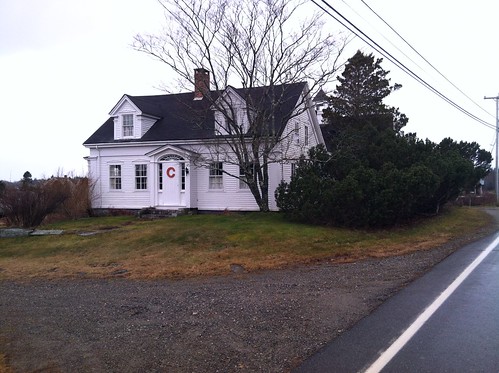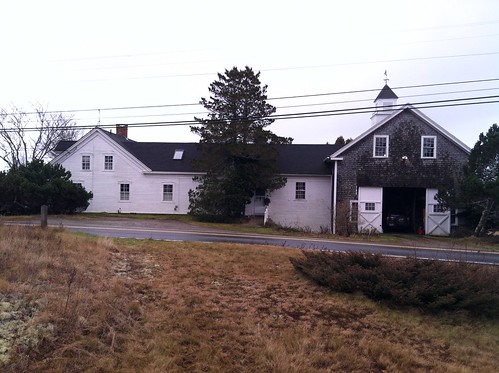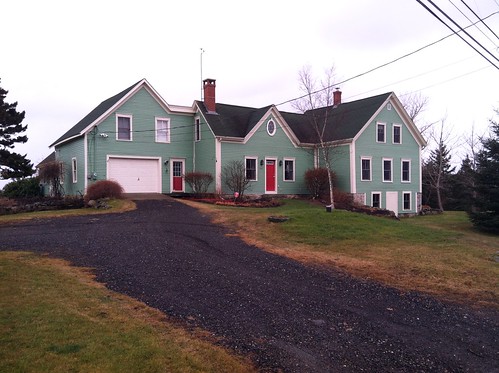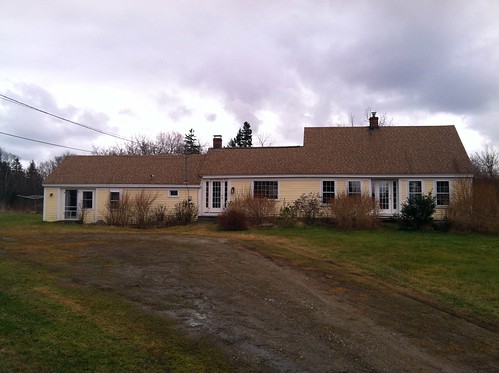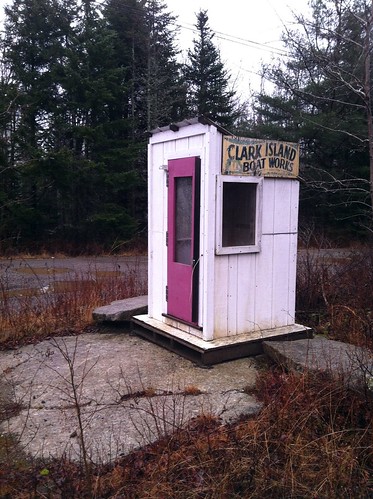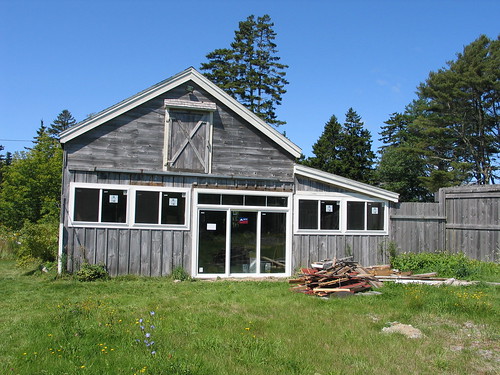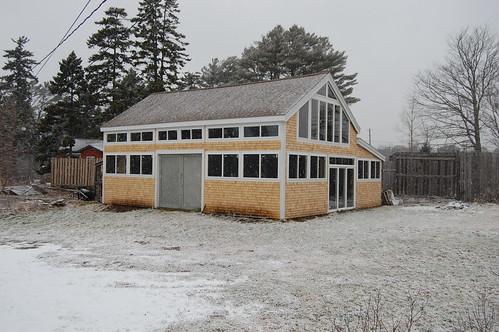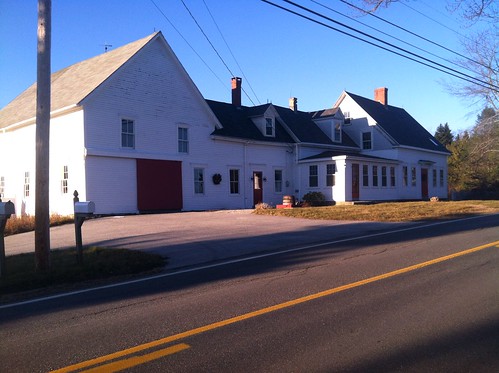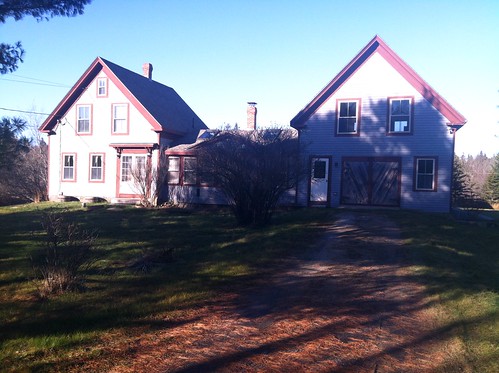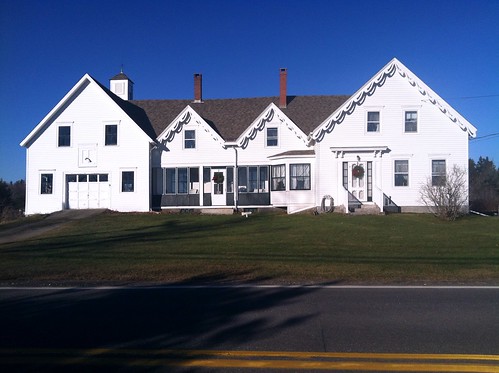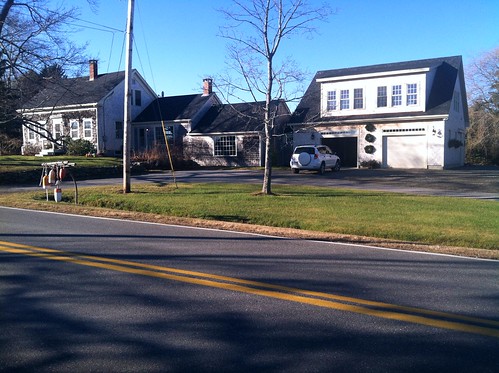I’d like to think that I’ll use this medium more, and more creatively. We’ll see how that works itself out in the light of various realities. The vernacular architecture project is the main arrow in the quiver at the moment, and here’s a recent contribution:
Category Archives: vernacular
vernacular architecture of a sort
David Malki captures an essence that I should have thought of myself (given that I’m thinking about how people construct the spaces they live in –and given that we now have a camera that can capture stuff in very low light). Not that there’s so very much Xmas decorating of this sort in the Midcoast, but I ought to collect some examples of what there is.

(he says permission to embed is granted)
on a walk in the rain
within a kilometer of home, along Route 131 in Martinsville:
Pointed Fir, alluding to Sarah Orne Jewett’s Country of the Pointed Firs, written in and about Martinsville [“Dunnet Landing”] ca. 1896 (Jewett rented the schoolhouse building, next door to Pointed Fir -see text of the novella)
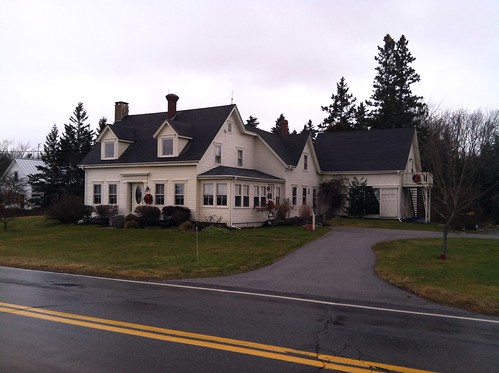
close to home
A variant of the house-connector-barn, various pieces renovated at different times. The old house (ca. 1850) is to the right, 4-over-4 with a center chimney and minimal basement. The middle piece has been the kitchen for many years (and might have been added ca. 1900 or so, to judge by construction details), and the shed on the left was added to the living space only 40 or so years ago.
endangered species
The barn
A clutch of probably-relevant books in my library
these are directly relevant to the project:
Identifying American Architecture: A Pictorial Guide to Styles and Terms, 1600-1945 / John J. G. Blumenson
Big House, Little House, Back House Barn: The Connected Farm Buildings of New England / Thomas C. Hubka
Discovering The Vernacular Landscape / John Brinckerhoff Jackson
A Field Guide to American Houses / Virginia McAlester
Field Guide to New England Barns and Farm Buildings (Library of New England) / Thomas Durant Visser
these have been with me for years, and I recognize them as broadly influential:
Shelter (1st Edition) / Lloyd Kahn
Shelter II / Lloyd Kahn
Modern Architecture and Design: An Alternative History / Bill Risebero
The Story of Western Architecture, 3rd Edition / Bill Risebero
Architecture Without Architects: A Short Introduction to Non-Pedigreed Architecture / Bernard Rudofsky
Looking Around: A Journey Through Architecture / Witold Rybczynski
A stretch of Glenmere Road
In March 2007 I snapshotted all the houses along about a mile of one of the back roads that I walk frequently. One question to ask: how much have things changed, or not, in five years? Here’s the set.
Vernacular Architecture of Midcoast Maine
Here’s a bit of text I wrote a couple of days ago, while walking to the post office:
A local landscape is a palimpsest of building history, and any wall or roof or chimney or porch or doorway is a product of choices make by somebody, or a succession of somebodies. Untangling the history is no simple task, even for a single property, but general patterns do emerge if one is attentive to local variation, and local knowledge can be eloquent if the investigator is patient.
The work of architects and builders is ‘vernacular’ insofar as it incorporates local tastes and predilections, and departs from the vernacular to the degree that its design and particulars use other (exogenous, not-popular) design items and materials. The vernacular is ‘popular’ in the sense that it’s how things are done in local tradition and practise.
Architectural history is a fruitful arena for the skills and tools of an anthropologist: there are observables and objective facts, but also plenty of room for the values and notions and delusions of the people who inhabit the architecture. People build houses with materials and tools and ideas congenial to climate and locality. Localities have styles, and variation within stylistic parameters, and the same is true of temporal eras. While uniformities may be imposed by sources of supply (e.g., window styles, shingle patterns, modular construction), there’s plenty of room for the expression of individual tastes and, for any particular feature, a fair bit of variety in details and alternatives. In the search for regional style we surely look for variation and hope for corroboration and patterned consistency at the core of variation, but we also expect and enjoy inconsistency and innovation.
Every house is to some degree an expression of the values and aspirations and preferences of the inhabitants. The dimensions of variation are not simple or without inconsistencies, and every house in the landscape has its own story, awash in accident and exception to whatever rules may seem to apply to the general situation. While occupants surely impress their own personalities onto properties, there are emergent patterns if one looks for long enough and listens carefully to the stories people construct to narrate their surroundings and doings. Even the most ungainly or prosaic doublewide fits somehow into the emergent grand scheme, and every bit of variation in decorative embellishment is potentially a jumping-off place for an essay that may reveal some deeper truth.
As one walks along a road looking at houses, a lot of repurposing is evident. A shed may be linked to a house to create a kitchen in one decade, and sometime later the barn may be liked to the shed and insulated to create more living space. A roof may be raised, dormers may sprout, and the porch may be enclosed to make more space for domestic redeployment. And at the other end of a building’s life cycle, the barn or shed may decay as bits of the roof succumb to time and neglect. Paint peels, stone foundations heave and slump, wood rots and warps, maintenance is deferred. The cribbing beneath an old barn bespeaks rotten sills to be replaced with a new foundation, poured in one afternoon by a cement truck, but probably by next summer nobody will be able to see the vestiges of the repair.
Even windows have complex histories, reflecting changes in construction methods, materials, and the evolution of continent-wide marketing (Pella windows come from Iowa…) as well as style preferences and price considerations. An entirely exogenous force like technological change in the glass industry can shift local parameters quite dramatically –after WWII, plate glass windows became fashionable; in the last decade double-glazing has made storm windows obsolete…
